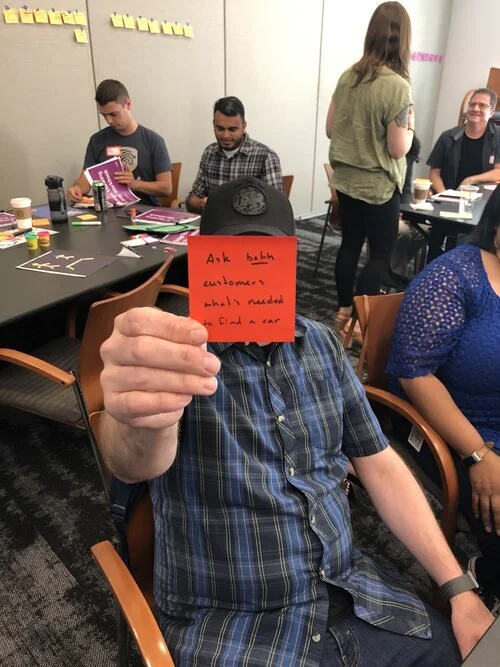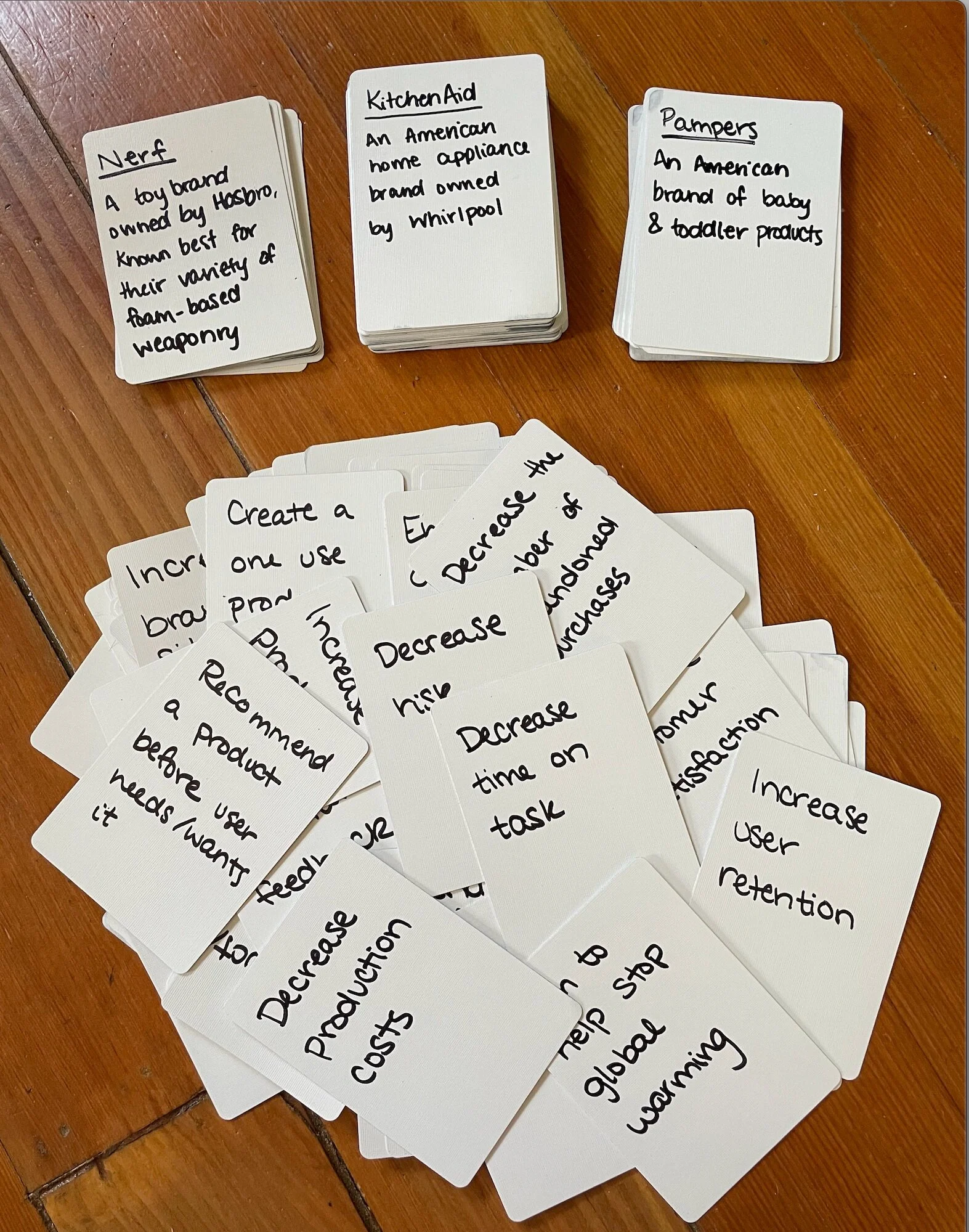Design Thinking Applications at Capital One
DESIGN THINKING - Becoming an instructor
Capital One has excellent classes for associates to sharpen and learn new professional skills. August 2019 I became an instructor and taught my first class of my fellow Capital One associates.
The greatest part of Capital One Design Thinking classes is the number of non-designers in the class. The business understands the benefits of design tools in all positions.
I really enjoy instructing others, but the most benefit has come from day to day working sessions. I can now easily pull open the deck to introduce the importance of ideating or prototyping before our cross-functional team jumps into a project.
IDEATION CARDS - Creative problem solving
It’s hard to step outside of the box in a corporate world. We get into our problem spaces and load our calendar with meetings. When people get into a workshop for ideating or research, they tend to stick in those problem spaces.
Together, with my product manager, we created our own game for ideation. One deck of 52 has a problem statement, and the other deck of 52 has a brief definition of the user motivation. Some of the cards refer to Capital One or banking problems, but most don’t! We found it important to pull people out of their comfort zones.
We’ve used our ideation cards with teams a few times now. It’s an excellent break between meetings but best as an opener for problem ideation.
LEGO SERIOUS PLAY
Who doesn’t love LEGO! After being trained in LEGO Serious Play (LSP), I knew I had to take this tool back to the design team. I trained Plano campus designers in this unique method as well as using it with my product team.
LSP is a form of communication, aiming to break the design thinking expectation that everyone has to draw. Though you can use it in many other forms, I’ve found it most effective in ideation and strategy.
I think the biggest win with LSP is the collaboration. To begin, you start with your own ideas. As the workshop moves along, you slowly break down your idea to become a part of the group idea.
At the end of the workshop, each person has communicated ideas, motivations, and hesitations. Together, the group prioritized and talked through each of these things ready to move into a plan of action!
To learn more about LSP, go to https://www.lego.com/en-us/seriousplay.
Team Quality SUrvey
Our product team tripled in a matter of months. Before we could bring on more design and product help, my product manager and I felt like team members were getting distant.
What makes our team successful? Happy? Communicating? After a few interviews, I identified goals and hypotheses and met with the team leads. After a bit of collaboration and prioritization, we were ready to move forward! I created a survey to measure our goals.
The entire team took the survey at the beginning of each retro. After retro, the team’s leads met to review retro topics and survey results. We’d then prioritize next steps, focusing on our team goals and areas for improvement.
Though this isn’t the ideal method for feedback, it really helped team leads during our team expansion. We still met with individual team members and asked for feedback in real time, but this survey offered a safe space for team members to anonymously share.
Associate Council - Improving communication in design
Within Capital One, there’s approximately 450 designers. In the Plano office, we have 45, nine being people managers. With such a large organization, the leadership team knows it’s difficult to share individual hesitations, needs, or problems.
The enterprise team created the associate council to alleviate some of these pain points. Two peers and I were elected to represent Plano associates. We quickly jumped into work, meeting with the Plano VP of design and synthesizing the information we had heard prior to election.
Our first big activity brought all Plano associates together to understand what our designers look for in companies, what blockers are in their way, and where psychological safety may be at stake. After synthesizing the results, we met with our VP of design again and moved forward with three potential solutions to our team’s biggest issues.






